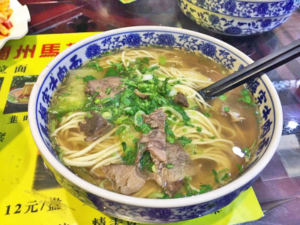
Julie Ma
Hui Food, Clothes, and Greetings
Know Thy Hui Neighbor (4)
How did you feel the first time you visited a “foreigner’s” home? Were you nervous? Did you find yourself wondering what to wear, what food would be served, and whether to bring a gift? Perhaps you are more often the host. How do you help your cross-cultural guests feel at ease?
Wahhabi-Inspired Islam in China
Know Thy Hui Neighbor (3)
Having learned a little about Islam with Chinese characteristics, you might wonder if there is any point in studying “orthodox” Islam to help you understand your Hui friends. The answer is yes and no.
Chinese Muslim Mystics
Know Thy Hui Neighbor (2)
To those who have traveled long distances to visit tombs of long-dead holy men and their sons, the news of God sending his son to us sounds good. To those who revere a great man who gave his life to save 70,000 people, the man who died as a ransom for the world sounds, well . . . divine.
Islam with Chinese Characteristics
Know Thy Hui Neighbor (1)
Starting with the Old School (Gedimu), this series introduces the main schools of Hui religious thought and practice, Hui diet, dress, customs, and festivals. Ideas for Christians seeking to better know and love their Hui neighbors in the name of Jesus are also included.
From the Middle East to the Middle Kingdom (Part 10)
The Present
What we Christians really want to know is: how can we share the gospel with such a diverse group? If saying the same, short phrase gets you free food in one place and the cold shoulder in another, how can we even dream of a Hui church?
From the Middle East to the Middle Kingdom (Part 9)
The First Missionaries to China’s Hui
The 19th century CIM pioneers teach us about patience, the need to focus on one people group, and the role of suffering. Later innovators like Harris teach us the value of contextualizing our language and lifestyle.
From the Middle East to the Middle Kingdom (8)
Hui in a Globalizing China (Since 1978)
The Hui responded to China’s opening up in different ways. Some became secularized, others used their freedom to become more religious. Some embraced globalization while others kept their hearts and minds close to home.
From the Middle East to the Middle Kingdom (7)
Hui and the Cultural Revolution
With the loss of their religious meetings, their halal food, and their freedom to run small businesses, some felt there was nothing left of their Hui identity. But others took another approach.
From the Middle East to the Middle Kingdom (6)
From Warlords to Communists (1913–1949 and Beyond)
Newfound solidarity: China became a republic, Hui warlords enforced a new Islamic reform movement, and an innovative minzu policy gave the Hui official status as a minority nationality.
From the Middle East to the Middle Kingdom (5)
Hui Uprisings (AD 1645–1912)
The history of the Hui enters a time of ethnoreligious tension which spilled over into violence.
